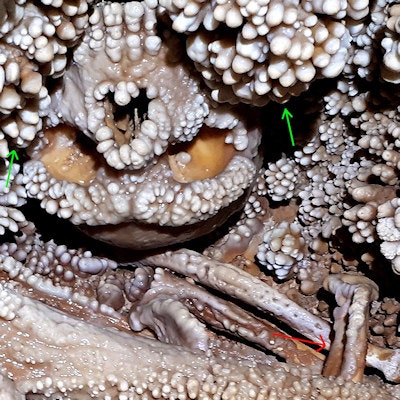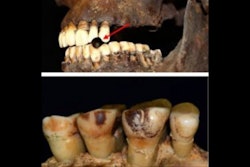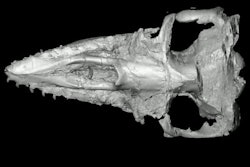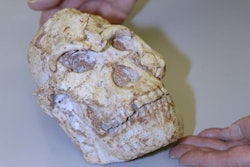
Scientists have discovered a nearly complete set of teeth in the Altamura man, an approximately 130,000-year-old Neanderthal skeleton encased in a cave in southern Italy. The findings were published on December 2 in PLOS One.
The skeleton's teeth had dental wear, and a few were missing. The skeleton also had a well-developed palatine torus, a dental feature previously not found in Neanderthals, according to the authors.
"This is the first detailed overview of the teeth and maxillary bones of the Neanderthal skeleton from Altamura," wrote the group, led by Alessandro Riga, PhD, of the department of biology at the University of Florence in Italy.
An extraordinary fossil
The Neanderthal specimen from Lamalunga Cave, near Altamura in Italy, is one of the most complete fossil hominins in Europe, Riga and colleagues wrote. Though it is stuck in calcareous concretions and the bones are mostly covered by calcite depositions, the state of its preservation is exceptional.
The specimen was discovered in 1993, but this was the first time scientists were able to provide insight into its oral cavity. The researchers used photos, videoscope, and x-rays taken in the depths of the cave to view hidden parts of the skeleton's teeth and palate.
Inside the mouth
A closer look revealed that its dentition was 80% complete. Two teeth, the upper right P3 and upper left M1, were lost while the Neanderthal was alive. Four others -- the lower right I1 and P3 and lower left I1 and I2 -- likely were lost after death, the authors wrote.
 (A) The cranium lies on its vault, embedded between two large calcareous formations (green arrows), while the mandible is in front of the cranium, slightly to its right (red arrow). (B) The mandible lies upside down above other bones and the right femur rests on it, covering the anterior part of the body and the mandibular symphysis. All images courtesy of Riga et al. Licensed under CC BY-NC 4.0.
(A) The cranium lies on its vault, embedded between two large calcareous formations (green arrows), while the mandible is in front of the cranium, slightly to its right (red arrow). (B) The mandible lies upside down above other bones and the right femur rests on it, covering the anterior part of the body and the mandibular symphysis. All images courtesy of Riga et al. Licensed under CC BY-NC 4.0. (A) Tooth loss that occurred prior to death. (B) This shows the socket of LM1 with a well-defined space for three roots. There are no evident marks of bone resorption.
(A) Tooth loss that occurred prior to death. (B) This shows the socket of LM1 with a well-defined space for three roots. There are no evident marks of bone resorption. This view of the maxillary dental arch and palate shows a well-marked palatine torus.
This view of the maxillary dental arch and palate shows a well-marked palatine torus.Most of the teeth still had their roots but were exposed by several millimeters, which could indicate gum disease. However, the periodontal bone was in good condition overall. Some of the lower teeth had visible dental calculus. The teeth indicate that the skeleton is of an adult male who was not old at the time of death, according to the authors.
X-rays revealed a periapical lesion on the anterior teeth, which was likely due to advanced dental wear. Also, a well-developed palatine torus was identified; this is believed to be the first well-documented case of this bony protrusion in a Neanderthal. The palatine torus is most common in East Asian and Native American populations, followed by Europeans, Africans, and Pacific populations in modern humans. Nevertheless, it isn't clear whether this trait is a good marker of ancestry. It's presence likely depends on many factors, including age, diet, and environmental conditions, they wrote.
More to learn
The study had no limitations, according to the authors. Further research is needed to obtain a better understanding of this specimen.
"To further clarify functional details of the Altamura Neanderthal dentition, future research will require micro-CT scanning of the entire maxilla and mandible," they wrote.




















